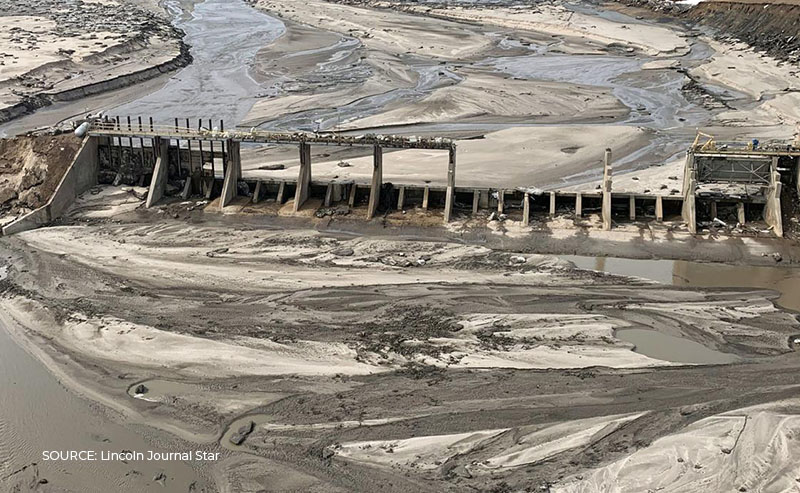The March 2019 failure of Nebraska’s Spencer Dam has a lot of public officials wondering the same thing, and justifiably so. There are now 90,000 dams nationwide, and a high number of them have received less than favorable Dam Safety Action Classification (DSAC) ratings from the U.S. Army Corps of Engineers (USACE). In fact, as of 2016, the federal government said there were approximately 15,000 U.S. dams classified as having high-hazard potential (HHP), meaning that their failure could result in loss of life. So is your community, city or county among those at an increased risk, and what can you do to better protect local residents from dam-related emergencies?
For starters, face the facts. No dam is flood proof. They are man-made structures that, with age, and potentially even the effects of climate change and global warming (if you agree with the theory) clearly have an increased risk of failure. According to the Association of State Dam Safety Officials (ASDSO), such failures are most likely to happen for one of five reasons: 1) overtopping caused by water spilling over the top of the dam; 2) foundation defects (these cause about 30% of all dam failures); 3) cracking caused by movements like the natural settling of the dam; 4) inadequate maintenance and upkeep; and 5) piping, i.e., when seepage through a dam is not properly filtered and soil particles continue to progress, forming sinkholes in the dam. Aside from dam failure, it is also important to note that a dam operator might be forced to release excess water downstream in order to relieve pressure from the dam. This too, though oftentimes necessary, might pose a risk to those who live and work in the path of the raging waters.
Secondly, communicate more. Dam risk reduction is most effective when all parties, i.e., state/local government, dam owners/managers, community stakeholders, and others are aware of each other’s actions and coordinate them effectively. Per the Federal Emergency Management Agency (FEMA) and its Dam Safety Fact Sheet (October 2018), it is important for dam operators to communicate probable or scheduled spillway release scenarios to the community in at-risk areas, so that they may better prepare themselves in the event of an emergency. Whether the risk is posed by normal operation, large reservoir releases or a dam failure, effective and consistent communication between local officials and the public is essential.
Thirdly, work together. FEMA, among others, believes that dam safety is a shared responsibility. Dam owners are accountable for maintenance and operations; local officials and the public are charged with awareness and preparedness. If you have not done so already, ask community leaders about existing groups focused on emergency management or hazard planning, such as your Local Emergency Planning Committee (LEPC), and get involved in their conversations and activities. Call for special meetings or town halls, and encourage all stakeholders, including the dam owner(s)/operator(s) and State government leaders, to attend. After all, State governments have regulatory responsibility for 70 percent of the dams within the National Inventory of Dams (NID), and primary responsibility for protecting their populations from dam failure.
Last, but certainly not least, have a plan (or two). Per FEMA, State and local emergency managers should understand the risk and implications of dam failures and incorporate dam risk into their hazard mitigation plan, Emergency Operations Plan (EOP), or similar documents, even if a dam is outside their community but would impact them during a failure. To help you along with your own planning endeavors, ask for a copy of the dam owner’s Emergency Action Plan (EAP)—they’re required to have one. EAPs identify potential emergency conditions; include vital inundation maps; and specify pre-planned actions for the dam owner(s) to follow to reduce property damage and loss of life.
Aside from these four basic recommendations for dam safety, you, as a local emergency planner, can (and should) monitor inspections and apply pressure to dam owners to address deficiencies. Why? Standards and safety requirements can become more stringent over time, and the gap between current standards and safety requirements, along with a dam’s conditions and performance capabilities, can widen to a potentially unacceptable level. By making those deficiencies known and continuing to educate the public in partnership with FEMA and the ASDSO, you will become a better prepared, more resilient community, city or county.
BOLDplanning provides comprehensive consulting services and powerful, online software for the collaborative development of Emergency Operations Plans (EOPs), Continuity of Operations/Government Plans (COOPs/COGs) and Hazard Mitigation Plans (HMPs).






